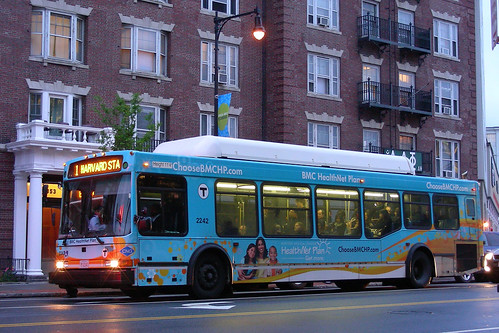U.S. Public Transportation Sees Second Highest Annual Ridership Since 1957



10.4 Billion Trips Taken On U.S. Public Transportation In 2011
Second Highest Annual Ridership Since 1957
According to a report released today by the American Public Transportation Association (APTA), Americans took 10.4 billion trips on public transportation in 2011, the second highest annual ridership since 1957. Only ridership in 2008, when gas rose to more than $4 a gallon, surpassed last year’s ridership. With an increase of 2.3 percent over the 2010 ridership, this was the sixth year in a row that more than 10 billion trips were taken on public transportation systems nationwide. During 2011, vehicle miles of travel (VMTs) declined by 1.2 percent.
“U.S. public transportation ridership in 2011 is now the second highest ridership since 1957,” said APTA President and CEO Michael Melaniphy. “What is exciting is that the uptick in ridership occurred in large, medium and small communities, showing the broad support that public transportation has nationwide. In fact, the largest rate of growth was in rural communities with populations under 100,000 where public transit use increased by 5.4 percent.”
“Two top reasons for the increased ridership are higher gas prices and in certain areas, a recovering economy with more people returning to work,” said Melaniphy. “Since nearly sixty percent of trips taken on public transportation are for work commutes, it’s not surprising to see ridership increase in areas where the economy has improved.”
Noting that the increased use of passenger information technology is also contributing to higher ridership, Melaniphy said, “The exponential growth of apps to track bus and rail arrival times is demystifying the ridership experience and attracting new customers to public transportation. More and more people are now able to find out when the next bus and train will arrive through public transit apps. This is making public transportation more attractive.” ................(more)
The complete piece is at: http://www.apta.com/mediacenter/pressreleases/2012/Pages/120312_2011Ridership.aspx
dballance
(5,756 posts)I love being able to catch the train to downtown and not having to think about parking or if my car might be abused in a garage. I can spend 3 or 4 bucks round trip on the train/bus and not have to think about where to park or the $10 to $12 for parking downtown.
It just makes so much more sense. I'm glad I live in a city with really good public transportation. Portland, OR.
Cirque du So-What
(29,385 posts)For instance, why 1957? Was ridership even higher than that before 1957? I'm guessing so, because the great flight to suburbia had already begun and was well underway by 1957.
Here's hoping that this data prompts Arlington, TX - home to the Texas Rangers and largest American city without so much as a bus system - to get off their car-centric asses and finally do something for their citizens.
KamaAina
(78,249 posts)Is there any impetus at all to create one? Starting from the ground up, they could deploy the latest technology like Bus Rapid Transit (BRT). One place to start might be expanding UTA's shuttle system into the community, particularly areas where students live, as has been done in other college towns like Fayetteville.
Cirque du So-What
(29,385 posts)They ran buses for three years as an 'experiment,' but that ended in September of last year. 'Lack of public funding' is cited as a reason, along with 'low ridership.'
http://www.star-telegram.com/2011/08/03/3268022/arlington-bus-service-is-ending.html
KamaAina
(78,249 posts)of course, that route only ran to Fort Worthless ![]() and only at commute hours. Perhaps a route to a commuter rail stop, bringing the Big D into the picture, would do better.
and only at commute hours. Perhaps a route to a commuter rail stop, bringing the Big D into the picture, would do better.
Also, there is precedent for a bus system supported entirely by business, in Emeryville, CA (between Oakland and Berkeley).
http://www.emerygoround.com
And it's fare-free! Just a thought.
nxylas
(6,440 posts)It would be more specific than the usual "since records began".